How to grow black onions: planting and care in the open field in stages
Nigella is not an onion variety, as some novice gardeners think. This is the name of the black seeds of ordinary onions, from which sets are grown.
If you have not yet had to grow seedlings on your own, then this material will be very useful for you. In this article, you will learn how and when to plant and harvest black onions.
The content of the article
Variety selection
Growing from seed beneficial for several reasons:
- varieties are presented in a large assortment;
- plants obtained from seeds do not produce arrows and are less susceptible to disease;
- the cost of seeds is low, you can plant several varieties and then choose the most successful one.
When choosing a variety, be guided by the climatic conditions of your region, the ripening time and the taste of the bulbs.
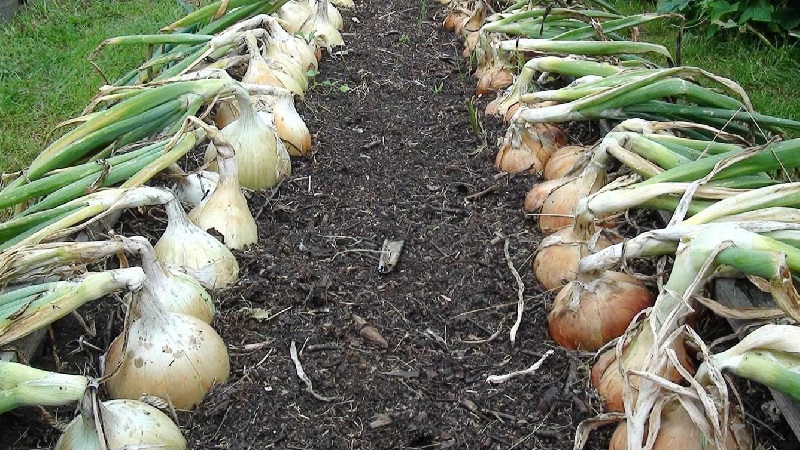
For open ground, unpretentious and easy-care varieties are suitable: Strigunovsky, Bessonovsky, Stuttgarter Riesen.
Globe, Exibition, Carmen, Caba show higher yields, but more effort will have to be made to grow them.
Here is a brief description of popular varieties for open ground:
- Esaul hybrid... High-yielding mid-season onion. Heads are round, medium size - 150 g. Juicy pulp, semi-sharp taste.
- Exibition. A popular Dutch variety. Large-fruited and high-yielding. Bulb weight - 600-800 g. Resistant to diseases and temperature extremes. The pulp is juicy and sweet, good in salads.
- Strigunovsky. Mid-season variety with medium-sized bulbs, weight 80-100 g. Keeping quality is good. Pulp of spicy taste with bitterness.
- Bessonovsky. Unpretentious small-fruited variety. The average weight of the bulbs is from 45 to 55 g. The shape is round, the pulp is juicy and sharp. Stores well up to 9-10 months.
- Black Prince... Yielding variety, burgundy bulbs. Small heads - 60-70 g. Juicy pulp with a bitter taste. Suitable for winter storage.
- Moldavian. Unpretentious and resistant to disease. Average weight of bulbs is 50-80 g. Good storage, suitable for commercial cultivation.
- Siberian annual. Cold hardy, yields in the first season. Round heads of medium size - 120-130 g. The taste is semi-sharp. Keeping quality is high.
You can also collect onion seeds yourself. For this, several large bulbs are planted in the spring. From the peduncles formed in summer, black seeds are collected in the fall.
Sowing terms depending on the growing region
The timing of sowing onions with seeds depends on the chosen cultivation method (direct sowing or through seedlings) and the climatic conditions of the region.
In Siberia and the Urals, seeds for seedlings are sown in early March. Plants are transplanted into open ground in mid-May. They sow directly from the beginning of May.
In the suburbs and the Leningrad region, nigella for seedlings is planted from the end of February. Seedlings are planted in a permanent place in early May. Direct sowing is carried out from the end of April.
For the southern regions, growing seedlings does not make sense, since nigella has time to ripen even with direct sowing in open ground.
Sowing preparation
The preparatory stage consists in processing the seed and preparing the soil.
Planting material processing
Nigella seeds are disinfected before planting to protect against diseases and germinate to accelerate the emergence of shoots.
First, the seeds are poured into a tissue bag and soaked in water for several hours. Then they are immersed in a solution of potassium permanganate (0.1%) for 20-30 minutes. The treated seeds are washed with running water.
After that, germination is started. The seeds are transferred to a cloth moistened with a solution of "Epin" (1 drop per 200 ml) and kept so until the first roots appear. At the same time, they monitor all the time so that the fabric does not dry out.
Soil preparation
The sowing area selected taking into account the predecessors is dug up and leveled. If in the previous season a lot of manure was introduced into the ground, then additional humus or compost is not added. As fertilizers, use ready-made kits intended for bulb crops.
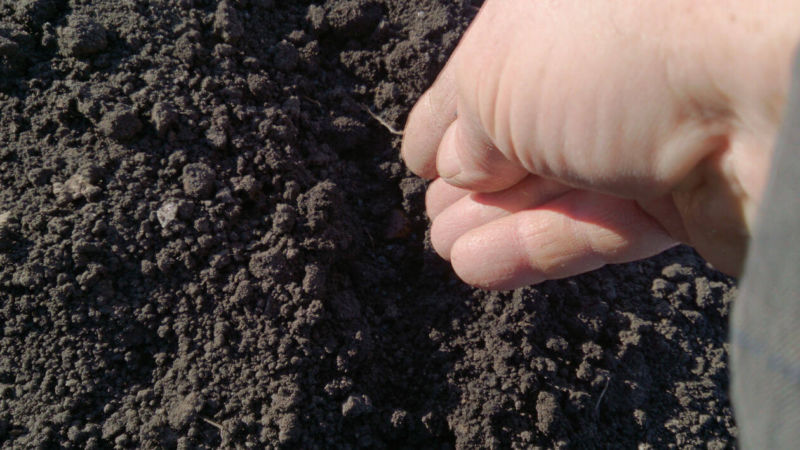
Landing technology
Nigella seeds are sown in early spring, so it is better to cook the site in the fall. The soil is loosened, leveled and sowed. Delaying the sowing time threatens with late ripening and a decrease in yield.
Council. Sowing nigella on a layer of snow allows you to evenly distribute and simultaneously harden the seeds.
Seeds are planted 1.5-2 cm on heavy soils and 3 cm on light soils. The surface of the earth is compacted after planting.
The distance between the rows is 18-20 cm. Thinning is carried out immediately after germination. If nigella is grown to obtain seedlings, then 5-6 cm is left between the seedlings, if to obtain a full harvest (annual onion) - 8-10 cm.
Attention. Sowing nigella in the fall guarantees ripening of annual onions by the next fall and its high-quality storage in winter.
Podzimny sowing of nigella is often used by experienced gardeners. The planting technology in this case does not differ from the spring one. In winter, the bed is insulated with a layer of snow. When it comes off, sprinkle the soil with a layer of humus or peat 2 cm thick.
Features of growing by seedlings
The seedling method of growing is used to obtain a full harvest of turnip from seeds in one season.
Nigella is sown on seedlings in February - early March. To do this, prepare a container with a mixture of turf and humus, or acquire a ready-made soil mixture. Sow both dry seeds and germinated ones. Sowing sprouted nigella speeds up the emergence of seedlings.
The prepared soil is moistened, the seeds are laid out, sprinkled with a layer of humus and compacted. The box is covered with foil until shoots appear.
After the greenery has germinated, it is placed on a lighted windowsill. The optimum temperature for seedlings is + 15-16 ° C. Further care of the seedlings consists in regular watering with warm water.
In mid-April, the seedlings are transferred to a greenhouse or to a balcony, ensuring a temperature of about + 6-7 ° C.
Open ground transplant
Chernushka seedlings are planted in open ground in early May. The finished seedlings look like thin feathers 15-20 cm long.
The size of the finished onion depends on the distance between the plants. It is optimal to withstand 8-10 cm when planting seedlings.
Further care
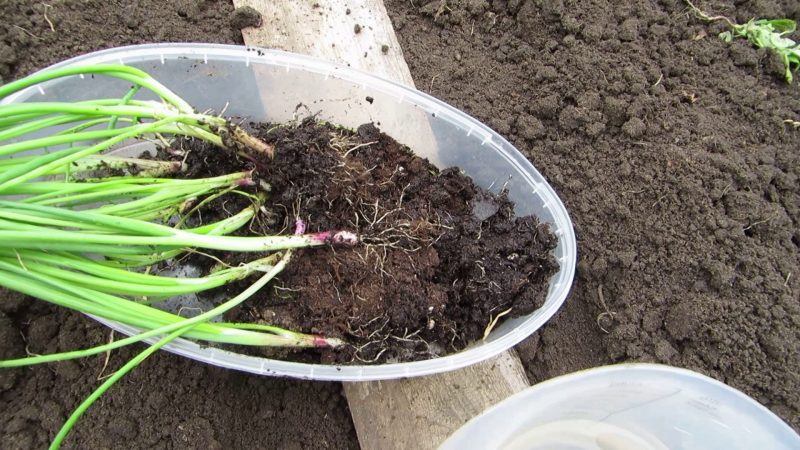
Caring for the planting of chernushka consists in thinning crops, watering, loosening the soil and removing weeds, and applying top dressing.
Thinning
Young plants begin to thin out when 1-2 leaves appear. It is permissible to do this in several stages as it grows, then the grown feather is used for greens.
Attention. The thinning stage is especially important when growing annual varieties. If the excess shoots are not removed in time, the bulbs will grow small.
When pulling between neighboring plants, leave the same distance as when growing ordinary onions - 8-10 cm.
Watering and loosening the soil
The bed with nigella is kept moist until shoots appear... In the future, watering is carried out as the top layer of the earth dries up. Watered nigella with warm, settled water.
The next day, after watering or rain, the soil is loosened, simultaneously pulling out the weeds.Stop watering three weeks before harvest.
Top dressing
If you have prepared and fertilized a bed for nigella before sowing, then you do not need to additionally feed the onion.
Otherwise, after the first thinning, the plants are fed with mullein (1 part per 5 parts of water) or slurry diluted in water (1: 3).
Diseases and pests
Planting nigella is not immune from disease and pest infestation.
Among the diseases are common fungal diseases of the feather (peronosporosis, alternaria, rust), fungal diseases of the bulb (various rot), viral and bacterial diseases (mosaic and bacterial rot).
Feather diseases are characterized by the appearance of dried tips, spots and plaque on the leaves. Diseases of the bulb - rotting onion scales.
They begin to deal with the problem when the first signs are found, otherwise you can lose the entire crop. For processing, both folk remedies and chemicals are used.
Attention. If you plan to use the green feather for food, do not use any chemicals to control diseases and pests - this is dangerous.
Treatment of seeds and soil before planting, compliance with crop rotation rules, timely thinning and removal of weeds helps to prevent the development of diseases.
Of the pests for nigella, the onion fly and nematode are the most dangerous.
The onion fly affects onions, garlic, and bulbous flower crops. Fly larvae eat plant tissues, leading to its death. The stem nematode is a small worm that lives in the soil and eats the bulb heads.
Council. Plant marigolds, calendula, mustard around the perimeter of the onion bed. These plants repel pests.
Dusting the beds with tobacco dust, wood ash, and ground pepper helps protect plantings from insects. And if you cover the crops with covering material, then the onion fly will not be able to lay eggs in the beds.
Of the chemical means of control, the drugs "Mukhoed", "Zemlin", "Sochva" are used. The solutions are prepared in accordance with the manufacturer's instructions.
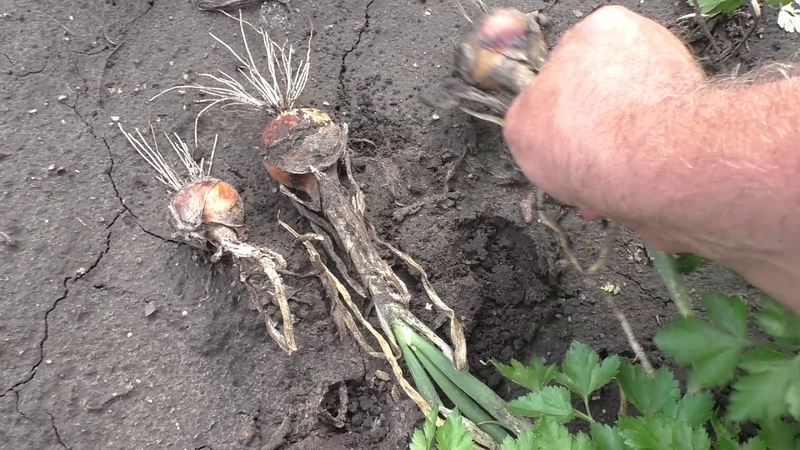
Harvesting and storage
The crops are removed from the beds as the bulbs ripen. The main sign of the ripeness of a turnip is feather lodging. If the percentage of lodging is 60-80%, then it's time to dig the onions.
Another sign of ripeness is the formed cover scales of the heads of the characteristic color for the variety.
The turnip is harvested in dry, sunny weather. It is good if there was no rainfall 1-2 weeks before the harvest. Then the bulbs do not have to dry for a long time.
Need to know. Only late varieties are laid for long-term storage. Early and mid-season onions are eaten immediately or used for harvesting.
If the harvest time has come, and the necks of the plants have not yet dried up, they are trampled to accelerate ripening. After collecting, the onions are thoroughly dried and stored.
Self-collecting seeds
To obtain seeds independently, several large, even bulbs without defects are planted in spring. In the summer they will give flower stalks, in which black seeds will ripen by autumn.
These seeds are collected, cleaned from debris and dried. Store nigella in a dark, cool and dry place. The germination rate of ripe seeds, subject to proper storage, is 80-90%.
Tips from experienced gardeners
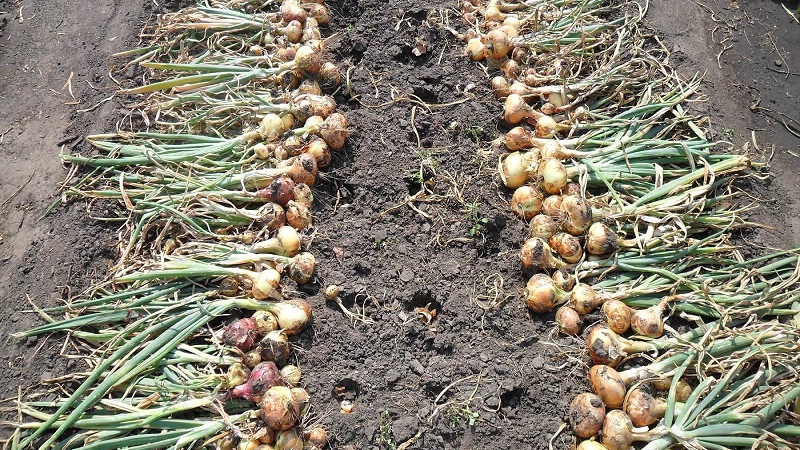
The key to successful growing onions from seeds is a competent choice of planting material. Experienced gardeners recommend considering the following criteria:
- Ripening terms. Early onions ripen in 3 months, mid-ripening ones - in 4 months, and late ones - 4.5-5 months.
- Head size. Depending on the variety chosen, the size of the ripe bulb can be from 50 g (small-fruited) to 500-600 g (large-fruited).
- Taste qualities. According to their taste, varieties are divided into spicy, semi-sharp and sweet. Spicy and semi-spicy are good for preparations and soups, sweet - for salads.
- The number of primordia in the nest. Onions are small-germinated (1-2 bulbs in a nest) and multi-germinated (up to 5-6 heads in one nest).
- Before purchasing seeds, carefully read the information on the package. Save it after planting and be sure to note where which variety is planted.
Compliance with these recommendations will help you choose the best variety, taking into account personal preferences and growing conditions.
Conclusion
Planting and caring for black onions in the open field is an affordable procedure for every gardener. Growing from seed makes it possible to choose a variety, taking into account your own taste preferences and climatic conditions of the growing region. And if you plant annual varieties, then a full harvest can be obtained in one season.